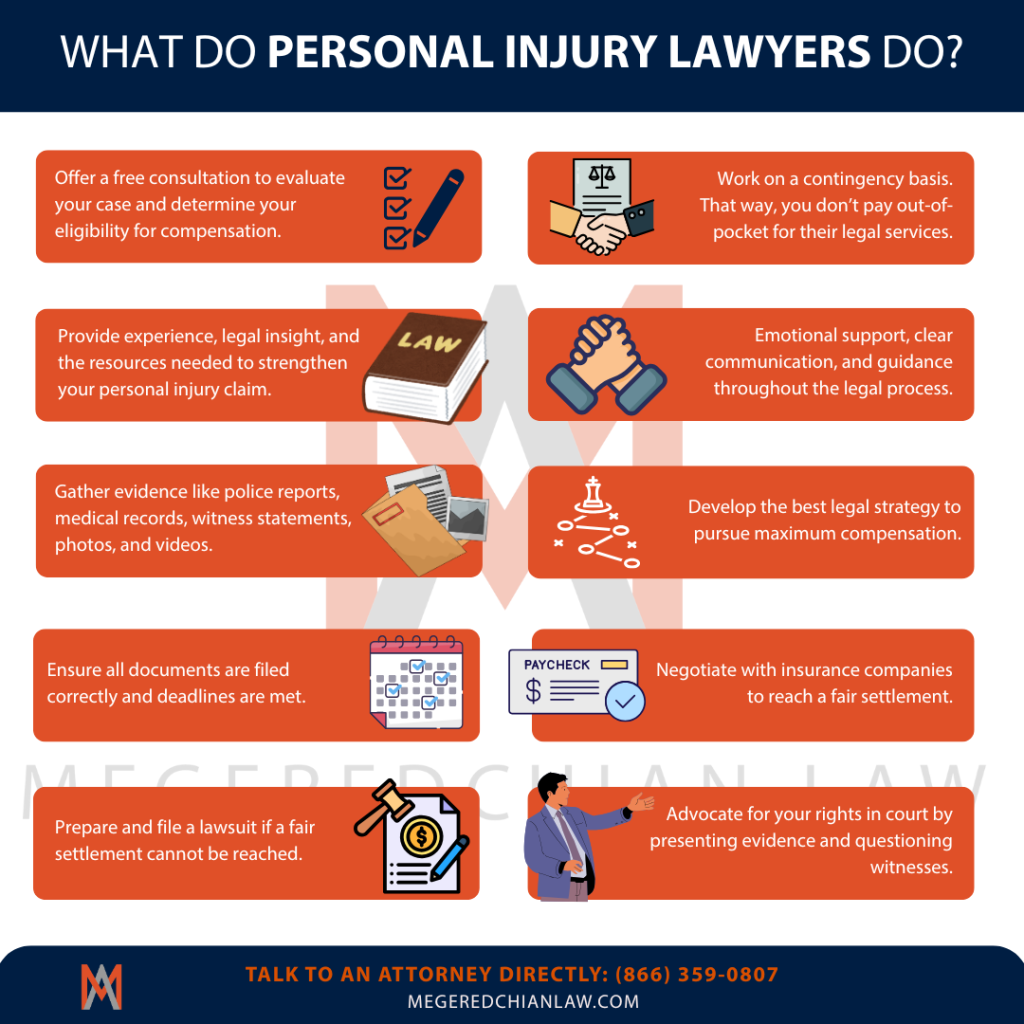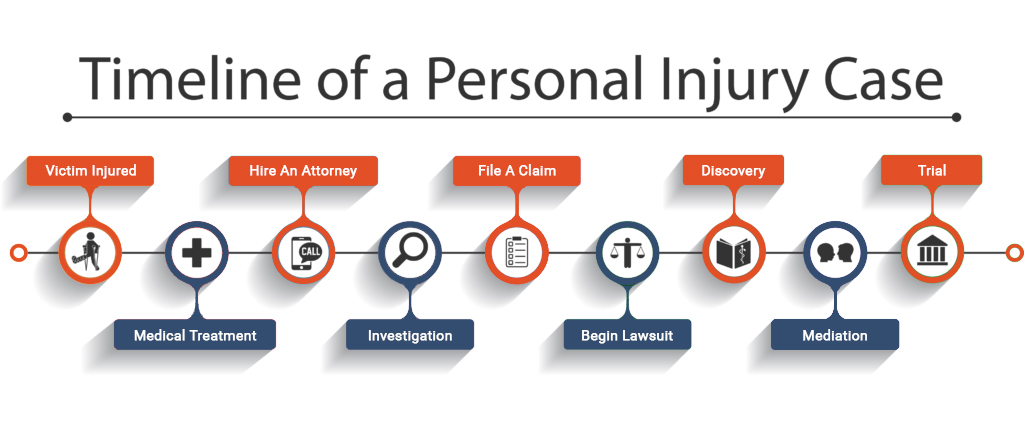1. Seek Medical Treatment
The first step after any accident is seeking medical care, even if symptoms seem minor. Certain injuries like concussions, whiplash, or internal trauma may not be visible right away, and prompt medical attention both protects your health and creates the records needed for your claim. Victims should also take photos of visible injuries, obtain a copy of the police report, and gather witness contact information as soon as possible.
Approximate deadline: Immediately to within the first few days after the accident.
2. Hire an Attorney
After receiving medical care, it’s best to consult a personal injury lawyer right away. In California, initial consultations are usually free, and contingency fee agreements must be in writing under Business & Professions Code §6147. Hiring an attorney early ensures evidence is preserved and deadlines are not missed, while also preventing insurers from pressuring you into a low settlement.
Approximate deadline: Within the first week to first month after the accident.
3. Conduct an Investigation
Once retained, the attorney investigates the case by reviewing police reports, interviewing witnesses, securing medical records, and, if necessary, hiring experts to reconstruct the accident or explain the medical impact. Preservation letters may also be sent to prevent loss of key evidence like surveillance video. The length of this step depends on how complex the case is and how quickly records are available.
Approximate deadline: Usually completed within 1 to 3 months.
4. File an Insurance Claim
Most personal injury cases start with filing a claim against the at-fault party’s insurance. A demand letter is sent, the insurer investigates, and negotiations begin. Many cases are settled at this stage without ever going to court. If the insurer offers too little, your injury attorney in California will advise whether to accept or proceed with litigation.
Approximate deadline: Often filed within 1 to 6 months of the accident.
5. File a Lawsuit
If negotiations fail, your attorney may file a lawsuit in civil court. California law generally allows two years from the date of injury to file (Code Civ. Proc. §335.1), though claims against government agencies require filing an administrative claim within six months. Exceptions exist for minors and for injuries discovered later. Filing the lawsuit formally begins litigation.
Approximate deadline: Must be filed within 6 months for government claims, or 2 years for most personal injury cases.
6. Discovery
Discovery is the exchange of evidence between both sides and includes written questions, document requests, and depositions. This phase is critical for building the case and often takes the most time, especially if expert witnesses are involved.
Approximate deadline: Commonly lasts 6 months to 1 year after the lawsuit is filed.
7. Mediation / Settlement Negotiations
Most California courts require mediation or settlement conferences before trial. At this stage, the attorneys and a neutral mediator attempt to resolve the case without a jury. Many cases settle here, saving both time and costs.
Approximate deadline: Often occurs 1 to 2 years after the accident, depending on case complexity and court scheduling.
8. Trial
If mediation fails, the case goes to trial. At trial, both sides present evidence, examine witnesses, and argue before a jury or judge. The jury issues a verdict, and damages are awarded accordingly. Trials may last from several days to weeks, and appeals can extend the process.
Approximate deadline: Usually 1 to 3 years after the accident, depending on the court’s calendar.

 Call Us:
Call Us: 



